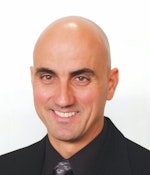If you haven’t been living under a rock for the past two decades, you are probably aware that there has been a sea change to industrial fieldbus technologies. As with any technology, from transportation and photography to personal computers, things have a tendency to evolve and become faster and less expensive with higher performance.
Likewise, industrial fieldbuses have also evolved from proprietary, or nearly so, serial or optical physical layers to higher-speed, lower-cost Ethernet-based protocols. EtherCAT is one of the most common and arguably the highest-performance Ethernet based fieldbus, but what is it?
Ask 100 plant engineers the question, “What is Ethernet?” and I would bet a cheeseburger that 99% of the answers can be put in one of two buckets. The most likely response will be some form of a description of Internet, such as the Internet Protocol (IP) and/or its application-layer protocols of transmission control protocol (TCP) or user datagram protocol (UDP) and at least a casual mention of switches. The other, smaller bucket will say that Ethernet is a type of cable.
Both of these responses are lacking in completeness. Ethernet is defined by the IEEE 802.3 standard as a frame-based computer networking technology for local area networks (LANs) defining everything from the wiring and signals used for the physical layers, frame formats and protocols used, the media access control (MAC)/data-link layer and common addressing formats. This layering is one of the most powerful mechanisms for the power and flexibility of Ethernet, and what makes it the most popular consumer and business LAN standard in the world. It makes sense to leverage this technology for industrial device communication and control.
But the challenge of using the Internet Protocol as a fieldbus stems from its required switches for routing frames to and from addressed devices and the nature of the data size each device needs in the field. Most I/O cards or even drives are a maximum of a few words of data. For legacy reasons, the shortest frame that can exist in a 100-megabit Ethernet network is 84 bytes, so the overhead to service one device with an input and output scan is at least 168 bytes, which is huge compared to the amount of actual useful data being moved.
This is called “bandwidth utilization,” and, if you have to send a unique frame to and from each device in the field to complete an I/O scan, that is a lot of traffic and time wasted for not-so-much process data, and it severely limits how fast an I/O update to all the network devices can be performed. So, any protocol that uses the IP layer and switches will be limited by the network itself.
EtherCAT, on the other hand, utilizes a “processing on the fly” approach to service raw Ethernet frames with no IP layer at all, no active routing and no switches and their associated delays. Each slave device is equipped with an EtherCAT slave controller (ESC) chip, which reads and writes data to an Ethernet frame as it travels through it, without a software stack and the associated delays.
Each frame from the master travels through every node in the same path through the network without stopping, and one frame can contain all the data for the entire network, serving both output data and input data, so the time to perform an I/O scan can be incredibly short, on the order of microseconds. The published performance numbers for 100-Mb EtherCAT is 1,000 digital I/O in 30µs, 100 servo axes in 100 µs.
So, EtherCAT is standard Ethernet, just not IP in most cases. However, standard networking tools can certainly be used to capture and interpret EtherCAT frames. Switches can be used when needed, and EtherCAT can support encapsulating EtherCAT data in UDP/IP frames, but they are not recommended in most cases for normal running of factory equipment, since switches are more a part of the problem than a solution.
Since the addressing is handled at the EtherCAT protocol level, not with an IP address, with 16 bits, 65,535 unique devices can be addressed in a single EtherCAT network. Additionally, when communicating process data to the network, EtherCAT uses what is known as “logical addressing”—no addresses are used that take up room in the frame. The master configures the slave to know where its data is located in the large block of process data that it grabs via direct memory access (DMA) from memory in the process controller and is sent out in the frame via a standard Ethernet port in the automation controller. It’s a very efficient and low-cost use of Ethernet communication.
Other fieldbuses certainly make use of Ethernet as a medium for communication, which helps drive the cost of their implementations down, but EtherCAT has decidedly made a huge impact in not only factory automation, but also high-speed data acquisition, robotics, aerospace, process control and other cutting-edge technologies.





